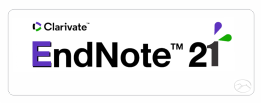Comunidade de pesquisa global: ¿o que os padrões internacionais de coautoria dizem sobre sua estrutura?
Publicado 2018-12-27
Palavras-chave
- Coautoria internacional, rede internacional de coautoria, EUA, Reino Unido, China, comunidade global de pesquisa.
Como Citar
Resumo
A comunidade global de pesquisa representa um objeto notável para os estudos sociológicos. Neste trabalho nós o consideramos como uma entidade com estrutura de rede e tentamos analisar o estado atual dessa estrutura e sua dinâmica recente. Entre as várias abordagens para o estudo dos links de rede que reúnem pesquisadores de todo o mundo, optamos por analisar a estrutura de coautoria internacional de trabalhos de pesquisa publicados em periódicos indexados pela base de dados Scopus Elsevier. Tentamos fornecer um esboço geral da estrutura da rede, revelar clusters regionais distintos existentes nos vários níveis dessa estrutura e descobrir as mudanças significativas ocorridas na estrutura da rede nos últimos 25 anos.
Downloads
Referências
Elsevier. 2018b. Scopus: An eye on global research: 5,000 publishers. Over 71M records and 23,000 titles. URL: https://www.elsevier.com/__data/assets/pdf_file/0008/208772/ACAD_R_SC_FS.pdf
Finardi, U. (2015). Scientific collaboration between BRICS countries. Scientometrics, 102(2), 1139-1166.
Glänzel, W., Schubert, A., & Czerwon, H. J. (1999). A bibliometric analysis of international scientific cooperation of the European Union (1985–1995). Scientometrics, 45(2), 185-202.
Gomez, I., Teresa Fernández, M., & Sebastian, J. (1999). Analysis of the structure of international scientific cooperation networks through bibliometric indicators. Scientometrics, 44(3), 441-457.
Kibalnik, A.G., & Volosyuk, P.V. (2017). Russian thesis researches of problems of international criminal law and international criminal justice (2010–2017) // Legal Science and Practice: Journal of Nizhny Novgorod Academy of the Ministry of Internal Affairs of Russia, 3, P. 72-83.
Lankina, S.A.& Platonova, T.E. (2015). Trends of innovation technologies development in small enterprises of tourist industry amid crisis, Economics, statistics and informatics. No.3. p. 77
Teodorescu, D., & Andrei, T. (2011). The growth of international collaboration in East European scholarly communities: A bibliometric analysis of journal articles published between 1989 and 2009. Scientometrics, 89(2), 711-722.
Wagner, C. S., Park, H. W., & Leydesdorff, L. (2015). The continuing growth of global cooperation networks in research: A conundrum for national governments. PLoS One, 10(7), e0131816.
Wang, Y., Wu, Y., Pan, Y., Ma, Z., & Rousseau, R. (2005). Scientific collaboration in China as reflected in co-authorship. Scientometrics, 62(2), 183-198.










